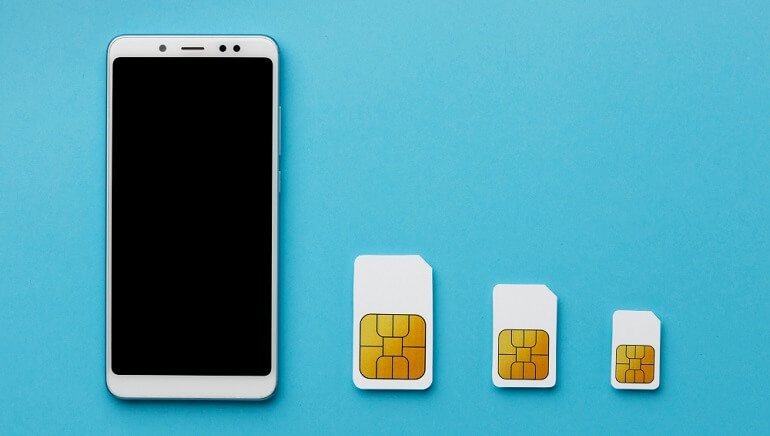Older technology gets outdated as it advances and changes further. The fact that gadgets are becoming smaller is one of the key features of modern technology. Not only are the smaller devices becoming more compact, but so are the huge ones. Once more, mobile gadgets are one extremely disruptive technology. Actually, the advancements in technology are going to replace the outdated SIM cards with the more contemporary eSIM.
The electronic Subscriber Identity Module, or eSIM, is poised to transform mobile services and telecommunications in the modern era. Up until now, the SIM card has been regarded as one of the most crucial parts of mobile devices, including phones. You couldn’t connect to a mobile service provider to make calls, send texts, access the Internet, and other common network functions without a SIM card. Having said that, let’s take a closer look at what eSIM is and how it will impact communication in the future.
The distinction between eSIM and SIM
A SIM card is the small chip that you insert into the designated slot on the back of your phone, as many of you are already aware of. In other words, a SIM card gives you a phone number and aids in the identification and authentication of your device by mobile networks. In order to stay connected to a local network and avoid the exorbitant charges of roaming services, you would often visit a store to obtain a local SIM card whenever you traveled to a different county. But that’s going to change shortly.
Having said that, an eSIM is an embedded chip that is installed on a mobile device’s motherboard at the time of manufacture. It cannot, therefore, be switched out or eliminated. An eSIM is about the same size as the nano-SIM cards that are frequently seen in contemporary gadgets. The ability to save and effortlessly switch between several network profiles is the primary functionality that an eSIM will offer. Using phone software, you can browse network providers and select the one that best fits your needs.
Is the eSIM now in use?
Since eSIM technology is still in its early stages of development, it might take some time before it gains widespread acceptance. Nonetheless, a few producers, such as Samsung and Apple, have already integrated eSIM technology into their products. In actuality, Apple is a trailblazer in this field of technology, and anything the company creates has the potential to go global very rapidly. Furthermore, an eSIM is already present in Apple’s iPads and smart watches from the Series 3, and there are reports that the upcoming iPhone will also have one.
Consequently, you might think about choosing an iPhone with an eSIM capability if you’re asking yourself, “Which iPhone should I get?” Furthermore, Apple is producing an eSIM variant known as Apple SIM specifically for their mobile virtual network operator service (MVNO). Apple did not, however, introduce this technology first. Actually, the Gear S2 smart watch was the first to use an eSIM, thanks to Samsung. Additionally, Google unveiled the same feature—exclusive to the United States—on their Pixel 2 phone.
Advantages of eSIM
As previously said, the eSIM is expected to displace traditional SIM cards in the future, freeing up more space for device manufacturing that will benefit operators, manufacturers, and consumers alike. But that won’t be the only advantage that eSIM offers:
More affordable phone plan options With eSIM’s assistance, customers would be able to obtain better offers for their phone plans. Customers will have the option of sticking with their existing prepaid plan provider or moving to a new operator. Customers don’t need to visit a physical retail location to get a new SIM card—they can just make this option on their phones.
A smooth integration: One further advantage is that customers can quickly and easily move between plans whenever they’d like. That’s all without needing to visit your provider and fill out a ton of paperwork for your phone plan. Furthermore, because customers are free to move providers at any time, carriers will be unable to force them into pricey plans with long-term contracts.
Increased practicality: eSIM cards work with smartphones and other Internet of Things (IoT) devices. Customers may select plans, pick the best options, and change providers right from their devices using an eSIM. This implies that postpaid customers can choose to stick with their current plan or switch to a new one as soon as their current one expires, without having to wait for a new SIM to arrive. Prepaid customers can make these changes whenever they want.
It will take agreement from manufacturers and phone companies before eSIM is globally standardized. Although it is not impossible, operators and suppliers will need to adjust appropriately, which will cause disruptions. It goes without saying that eSIM will ultimately completely replace SIM cards, and users will be able to fully benefit from it.



